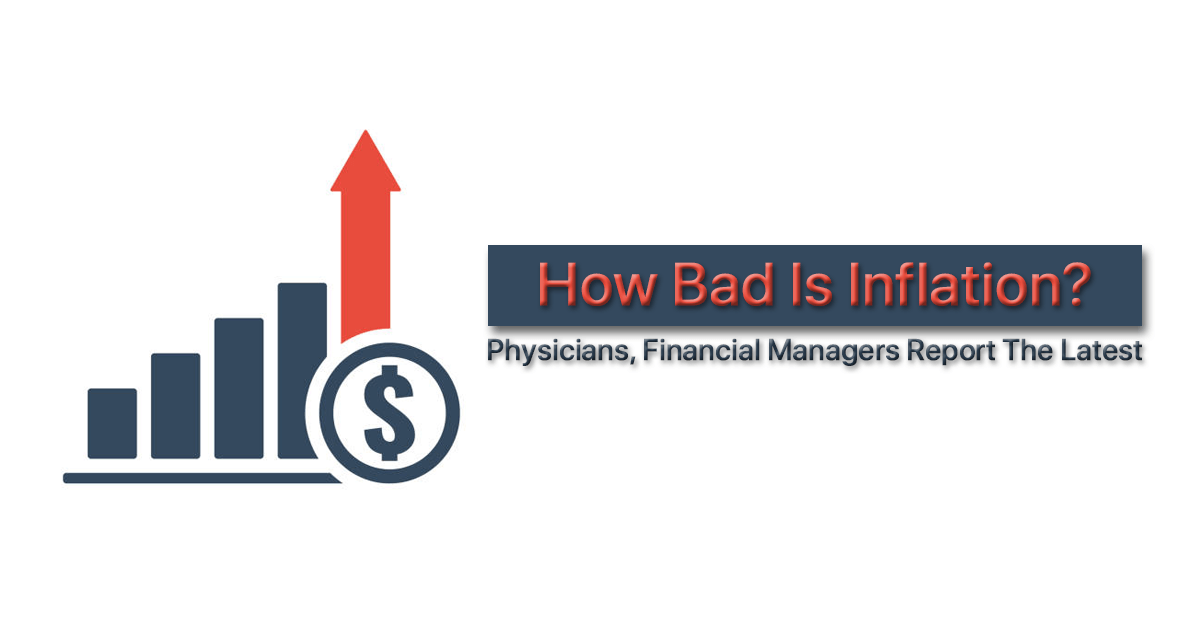How bad is inflation? Physicians, financial managers report the latest.
The Medical Group Management Association has published its 2022 MGMA Cost and Revenue Survey Report. The title is “Maintaining Margin in the Inflation Era,” and survey respondents said it’s been difficult to do so in 2022.
The COVID-19 pandemic and its lingering effects on health and the economy are hurting the bottom line for physicians’ practices and health systems.
The Medical Group Management Association has published its 2022 MGMA Cost and Revenue Survey Report. The title is “Maintaining Margin in the Inflation Era,” and survey respondents said it’s been difficult to do so in 2022.
“While 2021 showed signs of an uneven recovery from a lockdown-heavy 2020, the new threats to the financial solvency of many medical practices – as well as the emotional resolve of frontline workers across the industry – are proving to be just as difficult to thwart as the pandemic,” the report said. “Rising expenses and the persistent challenges to restore productivity and revenue in healthcare organizations have led to several health systems reporting significant losses and others with many operating margins under 1%.”
Staffing
Whether physician- or hospital-owned, primary care staffing levels of 2021 were down from levels of 2019 before the pandemic.
Across the medical practices, the number of workers is down but costs are going up. Respondents said staffing and labor costs are driving up costs. They “noted that rising salaries and wages – and added expenses for temporary workers and locum tenens providers – were key contributors to the imbalance their finances face this year,” the report said.
“In some cases, physician-owners of practices may not be feeling the pinch yet but will soon,” the report added.
Other expenses
Medicare reimbursement, lab supply and drug costs, utilities, sluggish patient visit rates that inhibit productivity and revenue, and rising malpractice insurance premium rates all are other factors driving up the cost of doing business.
In the three-year trend from 2019 to 2021, operating expenses were up 13.57% for physician-owned primary care practices, but down 10.91% for hospital-owned primary care practices. At the same time, physician-owned nonsurgical specialists reported an operating cost spike of 36.01%, the worst for any practice or health system.
Containing costs
MGMA respondents listed their three most helpful strategies for containing costs this year:
- Eliminate spending on unnecessary supplies.
- Examine staff schedules to monitor overtime and possible overstaffing.
- Implement incentive opportunities with payers to boost reimbursement.
Revenue
In the 2022 report, all medical group types showed improvement in total medical revenue per fulltime equivalent (FTE) physician, from 2020 to 2021. However, physician-owned primary care practices and physician-owned surgical specialties are below their pre-pandemic benchmarks from 2019, by $74,844 and $71,480, respectively.
Encounters
In primary care, patient encounters are down 6.4% for physician-owned practices and down 2.87% in hospital-owned practices, from 2019 to 2021.
For the same time, encounters were down 25.52% for physician-owned nonsurgical specialists and 34.25% for physician-owned surgical specialists. But encounters rose 22.55% and 3.34%, respectively, for those specialists in hospital-owned practices.
“The figures are worrisome for physician-owned practices, as only primary care groups made up any ground on total encounters per FTE (fulltime equivalent) physician in 2021,” the report said.
For More Information: How bad is inflation physicians financial managers report the latest

